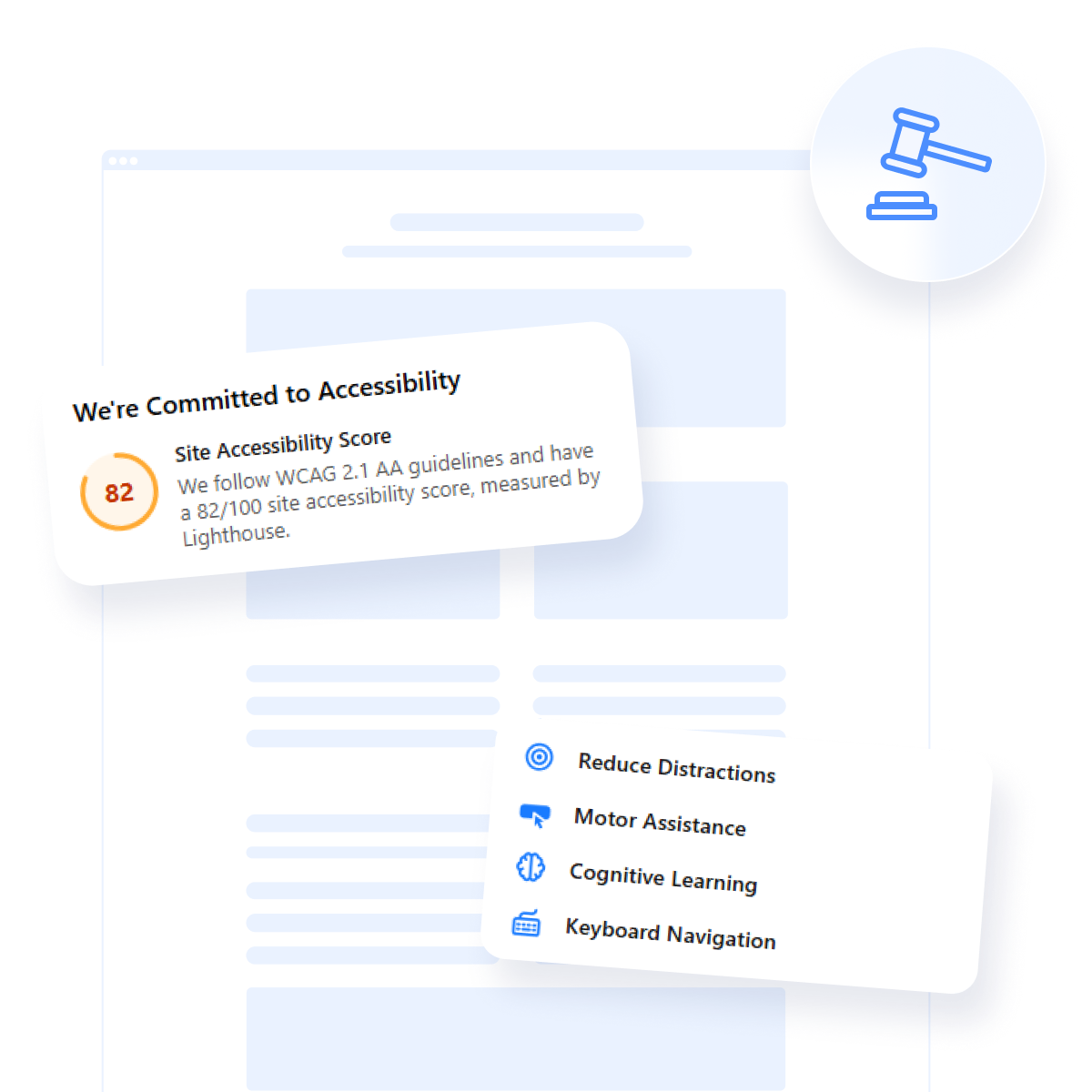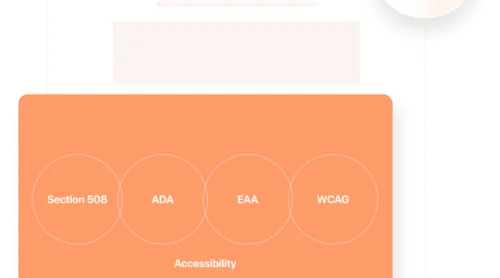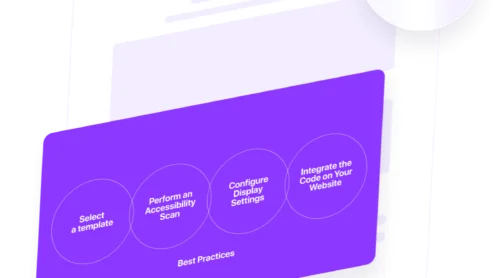ADA website lawsuits have become increasingly common as digital accessibility takes center stage in civil rights discussions. These legal actions are filed under the Americans with Disabilities Act (ADA), a federal law that prohibits discrimination against individuals with disabilities. Just as physical spaces are required to be accessible, the law extends to digital environments — specifically, public-facing websites.
According to ADA Title III, all businesses that provide goods or services to the public must ensure their websites offer an inclusive user experience. Failure to do so may result in serious legal consequences. In many cases, lawsuits are filed not only by individuals with disabilities but also by advocacy groups or legal representatives who identify systemic non-compliance.
In short, an ADA website lawsuit centers on whether your digital presence unfairly excludes people with disabilities. Understanding this foundation is the first step in building a legally and ethically sound web experience.
Why Businesses May Face ADA Website Lawsuits
After grasping what an ADA website lawsuit entails, it’s important to explore the reasons these lawsuits are filed against businesses in the first place. Often, it’s not out of bad intent, but rather a lack of awareness about accessibility obligations. Many companies underestimate how crucial digital inclusion is, both ethically and legally. As a result, they leave their websites vulnerable to a website accessibility lawsuit.
The majority of these legal actions stem from design or development oversights that make it difficult — or impossible — for users with disabilities to navigate or interact with a website.
Below are some of the most common triggers that may lead to an ADA lawsuit:
- Missing alternative text for images. Without alt attributes, users relying on screen readers cannot understand the purpose or content of images, making the experience incomplete.
- Lack of keyboard navigation. If essential functions — like menus, forms, or buttons — aren’t accessible via keyboard alone, users with motor impairments are effectively excluded.
- Screen reader incompatibility. Some websites contain elements or coding structures that are unreadable or confusing for assistive technology, causing major navigation barriers.
- Insufficient color contrast or font issues. Users with low vision or color blindness struggle to read content when visual clarity is compromised by design choices.
- Unlabeled form fields and buttons. Forms that lack proper labels prevent users from knowing what information to input, especially when using screen readers.
Each of these issues increases business liability for inaccessibility and can result in serious legal issues for non-compliance. Even unintentional exclusions can be viewed as discriminatory under ADA Title III, particularly when the website serves the public.
Lawsuits frequently result in settlements, where companies are required to fix accessibility gaps and pay damages. These cases also often include mandates to implement ongoing audits and training. Inaccessible design is no longer a mere oversight — it’s a legal liability that can have lasting financial and reputational consequences.
What Happens During a Website Accessibility Lawsuit
Receiving notice of a web accessibility lawsuit can be unsettling — especially if it’s the first time a business has faced legal scrutiny over its digital presence. Understanding what to expect can help you respond strategically and reduce both legal and reputational risks. A lawsuit typically follows a series of procedural steps, some of which may be avoidable through early negotiation.
Below is an overview of what generally happens during a website accessibility lawsuit:
| Stage | Description |
|---|---|
| 1. Demand Letter or Lawsuit Notice | Most cases begin with a formal legal notice highlighting accessibility barriers and requesting action or settlement to avoid court proceedings. |
| 2. Legal Review and Consultation | Businesses typically consult an attorney to assess liability, understand legal risks, and formulate a response plan. |
| 3. Filing a Response | If a formal lawsuit is filed, your legal team will submit an official response — either denying liability or negotiating terms. |
| 4. Court Proceedings or Settlement | Some cases lead to court rulings on web accessibility, but most are resolved through settlements to avoid prolonged litigation. |
| 5. Remediation and Compliance | Post-resolution, businesses are often required to make accessibility improvements and implement ongoing compliance efforts. |
Plaintiffs in these cases typically argue that they were unable to complete essential tasks due to digital barriers — highlighting plaintiff claims for inaccessible websites. Businesses can defend themselves by presenting accessibility audits, documenting compliance efforts, or arguing that the issues don’t constitute legal violations.
While not all cases go to court, a structured defense with legal support is essential. Responding promptly and working with accessibility experts can significantly improve the outcome and protect your brand.
Major ADA Website Lawsuit Settlements You Should Know About
The consequences of a website accessibility lawsuit settlement can extend far beyond financial loss. Businesses that fail to comply with accessible design legal standards often find themselves navigating legal complaints, public scrutiny, and mandatory technical overhauls. Over time, several ADA website lawsuit settlements have become pivotal learning moments for industries ranging from food service to entertainment and education.
Below are some of the most notable legal settlements that have influenced how courts and companies approach web accessibility:
Domino’s Pizza vs. Guillermo Robles (2019)
In one of the most influential web accessibility cases, a blind man named Guillermo Robles sued Domino’s Pizza after he was unable to order food through their website and mobile app using screen reader software. The case challenged whether the ADA applied to digital properties. Although Domino’s argued that the ADA didn’t specifically reference websites, the courts ruled in favor of Robles.
The Supreme Court refused to hear Domino’s appeal, allowing the Ninth Circuit’s decision to stand. The lawsuit didn’t just end with financial implications — it ignited a national conversation and led to extensive compliance changes across the fast-food industry.
Winn-Dixie Supermarkets (2017)
A legally blind man, Juan Carlos Gil, filed a lawsuit against grocery chain Winn-Dixie after he was unable to refill prescriptions or access store coupons via their website. A federal court initially ruled in Gil’s favor, declaring that the company’s website was a place of public accommodation and must adhere to ADA Title III.
The verdict was groundbreaking at the time and encouraged similar legal actions nationwide. Although an appellate court later reversed the decision, it marked the first time a federal judge ordered website accessibility remediation, including audits, code fixes, and staff training.
Beyoncé’s Official Website (2019)
Beyonce.com was the subject of a class action lawsuit filed by a visually impaired woman who claimed that the site lacked alt text, keyboard functionality, and screen reader compatibility. The complaint argued that these issues denied equal access to fans with disabilities. Though the case was settled out of court, the website underwent significant accessibility improvements. The lawsuit brought major visibility to the entertainment industry’s digital obligations under the ADA, especially for celebrities and public figures with massive online audiences.
Each of these case outcomes for inaccessibility demonstrates the importance of proactive digital accessibility. Settlement terms often require businesses to follow WCAG 2.1 AA standards, implement staff training, and submit regular progress reports to legal authorities.
As courts increasingly interpret websites as public accommodations under the ADA, these high-profile cases serve as both a warning and a guide. Addressing accessibility now can save your business from costly settlements — and show your commitment to inclusive online experiences.
How To Respond If You’re Sued For Website Inaccessibility
Facing legal action over digital accessibility can feel overwhelming, especially for businesses that were unaware of their obligations. But knowing how to fight an ADA website lawsuit can significantly reduce your exposure and help you move forward with a stronger foundation. The key is to respond quickly, carefully, and with expert guidance.
Once a complaint arrives, your response can take several directions. The right path depends on the severity of the claims, your current accessibility status, and your willingness to make immediate changes. Here’s how to begin:
- Don’t ignore it: Failing to respond to an ADA complaint can result in default judgments, increased penalties, and further reputational harm.
- Consult legal counsel immediately: Reach out to an attorney who specializes in digital ADA compliance or civil rights law. They’ll help assess your risk and prepare your defense.
- Evaluate the claims: Work with accessibility experts to review the plaintiff’s accusations and compare them against WCAG standards and your current website structure.
- Initiate a remediation plan: Regardless of how you proceed legally, begin working on a website remediation strategy to fix any verified accessibility issues as quickly as possible.
- Consider settlement vs. litigation: Many businesses resolve claims outside of court to avoid high costs and negative press. A lawyer can help you determine if this is the right approach.
While each case is different, most defenses focus on proving your business has taken steps to comply — or is actively working toward compliance. This shows good faith and reduces the perception of negligence. Defending against legal demand letters isn’t about denying problems; it’s about demonstrating responsibility and action.
If you’ve never undergone an accessibility audit or worked with professionals in this space, now is the time. Whether you settle or go to court, a structured response backed by evidence will serve you far better than delay or denial.
Steps To Prevent ADA Website Lawsuits
Avoiding an ADA website lawsuit starts with recognizing that accessibility isn’t just a legal requirement — it’s a long-term commitment to inclusivity and user equity. Businesses that embrace proactive digital accessibility not only reduce legal exposure but also expand their reach and enhance user trust.
Whether you run a small business or a large enterprise, the following strategies can help you prevent accessibility issues and create a more inclusive online presence:
Key Actions To Strengthen Website Accessibility
| Action | Why It Matters |
|---|---|
| Conduct an accessibility audit | Identify violations against WCAG standards through both automated and manual testing. An audit helps detect issues before users — or legal counsel — do. |
| Design with accessibility in mind | Use inclusive design from the start: add alt text, ensure logical navigation, proper heading structure, and color contrast to serve all users. |
| Consult with accessibility professionals | Experts can guide you through remediation, train your team, and ensure compliance with evolving standards and regulations. |
| Create internal accessibility policies | Document standards for content creation and development to maintain consistent accessibility practices across teams and departments. |
| Schedule regular accessibility reviews | Conduct audits every 6–12 months or after major updates. Ongoing testing ensures your website stays compliant as content and features evolve. |
Proactive compliance helps you steer clear of accessibility compliance penalties while fostering disability inclusion online. These steps aren’t just about checking legal boxes — they reflect your commitment to a better, more equitable web experience for all.
To make accessibility easier to implement, you can also use tools like the Elfsight ADA compliance widget. It helps enhance your website’s usability for people with disabilities and supports ongoing compliance with major standards such as WCAG.
How to Configure ADA Compliance Using Elfsight
The Elfsight accessibility widget makes aligning your website with ADA regulations simple and efficient. This code-free tool offers a fast path to accessibility by combining preset user modes with built-in audit capabilities, helping you stay legally compliant while improving the overall user journey.
Follow these steps to configure and launch the widget using the Elfsight platform:
- Choose a Template to Start. Open the Elfsight widget editor, pick a template. Click “Continue with this template” to move forward with customization.
- Conduct an Accessibility Scan. Provide your website address in the audit field and click “Check”. The system runs a Lighthouse-based evaluation and generates a report showing potential accessibility issues.
- Fine-Tune Appearance and Behavior. Use the “Settings” panel to configure language, widget position, preference storage time, and apply any additional styling or behavior through CSS/JavaScript if required.
- Embed the Widget on Your Website. Press “Add to website for free” to generate the installation code. Insert it into your website’s backend, ideally just before the </body> tag. Publish the changes to activate the widget on all pages.
This no-code accessibility solution is ideal for teams looking to upgrade usability without involving developers or complex tools.
Create your own widget — boost website accessibility!
Conclusion
Implementing preventative strategies is the most effective way to avoid the financial and reputational risks associated with an ADA website lawsuit. However, true protection comes from more than just checking off legal requirements — it requires a long-term accessibility strategy that is embedded into the fabric of your digital operations.
The legal landscape is evolving, and so are user expectations. Businesses must recognize that accessibility is not a temporary project, but a lasting commitment to inclusion, equity, and legal responsibility. Starting with regular audits, continuous education, and supportive tools can provide a solid foundation. By staying informed and responsive, you not only reduce legal risk — you demonstrate a genuine dedication to doing business the right way.







